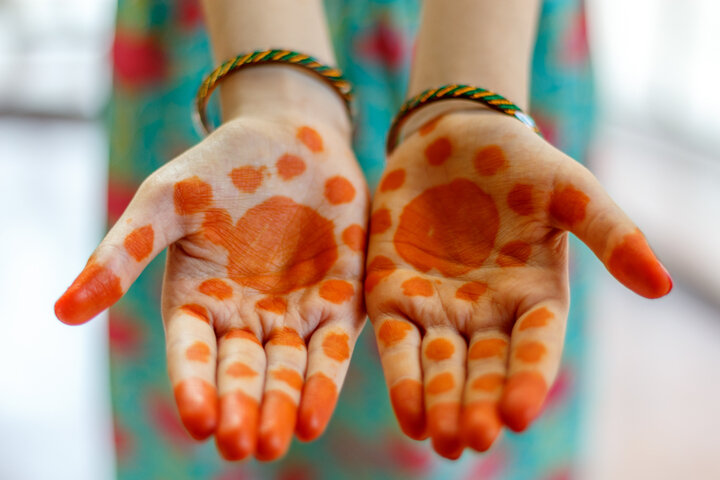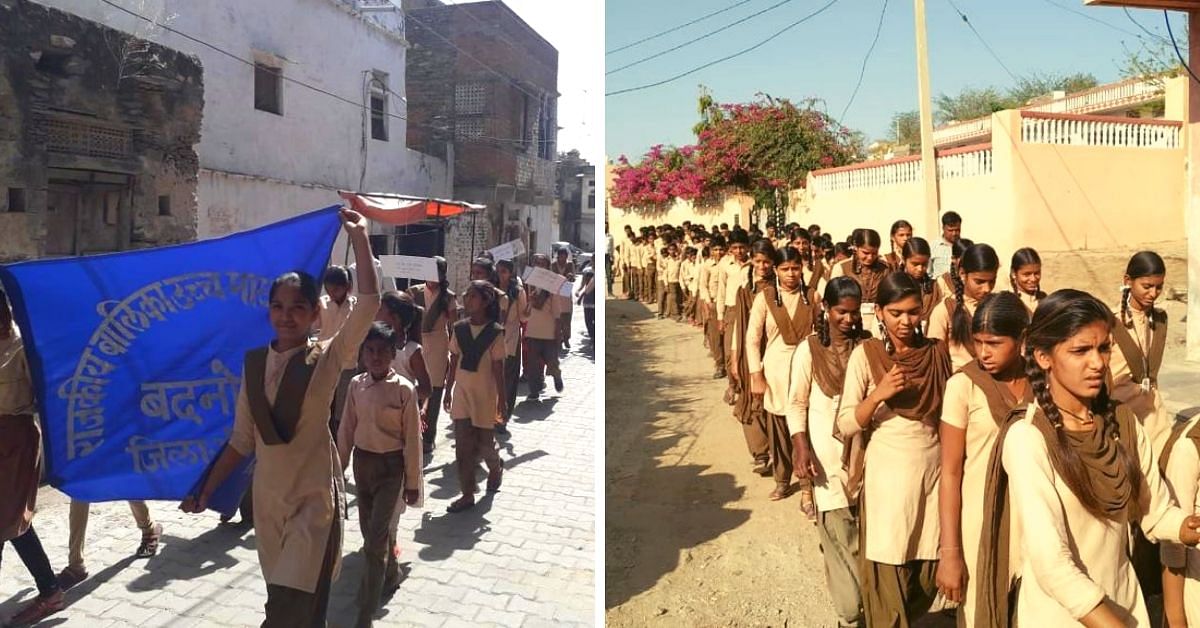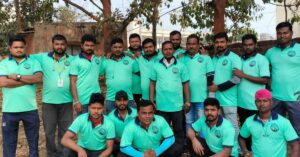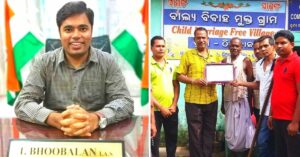India Has 1.5 Million Underage Brides Every Year. Here’s How ’21’ Can Change That
Many wonder if such a law can even be enforced. We have 5 inspirations to prove it can.

On 2 June, the Union Ministry for Women and Child Development established a task force to examine issues related to age of motherhood, lowering Maternal Mortality Rate and improvement of nutritional levels. The task force also found a mention in PM Narendra Modi’s address to the nation on the 74th Independence Day. “We have set up a committee to reconsider the minimum age of marriage for girls. The Centre will take a decision after the committee submits its report,” he said.
The task force is headed by former Samata Party President Jaya Jaitly, Dr Vinod Paul of the NITI Aayog and several top bureaucrats from the Centre, and one of the many issues that it will examine to address these concerns is the possibility of increasing the age of marriage for women from the present 18 years to 21 years.
This is a particularly contentious issue, particularly among religious and social conservatives.
The Prohibition of Child Marriage Act, 2006, prescribes a minimum age of marriage to both outlaw child marriages and protect minors from abuse. However, the reality is vastly different.
“Estimates suggest that each year, at least 1.5 million girls under 18 get married in India, which makes it home to the largest number of child brides in the world – accounting for a third of the global total,” says UNICEF.
Personal laws of various religions on the question of marriage have their own standards. The Hindu Marriage Act, 1955 has established 18 as the minimum age for the bride and 21 for the groom. As per Muslim Personal Law, a Muslim girl can marry when she attains puberty or completes 15. Similar to the PCMA, The Special Marriage Act, 1954, prescribes 18 and 21 as the minimum age of consent for marriage of women and men respectively.
In addition, the Supreme Court ruled in 2017 that sexual intercourse by a man with his wife, who is below 18, is rape. The ‘consent’ of a minor is invalid since she is deemed incapable of giving consent at that age. However, under PCMA, only a child bride or groom can file a petition to annul their marriage. Moreover, the petitioner needs a guardian or best friend, who must be an adult, and a Child Marriage Protection Officer, to file this petition.
There are naturally strong concerns about such difficulties in accessing justice.
Is increasing the age to 21 a good move?
As per the 2016 National Family Health Survey (NFHS)-4, 27 per cent of girls are married before they turn 18 and 31 per cent of married Indian women give birth by the age of 18. There are multiple reasons why increasing the age of marriage is a good move.
The differing legal standards on the age by which men and women can marry “contributes to the stereotype that wives must be younger than their husbands,” argues the Law Commission in a 2018 consultation paper on reform in family law. However, the Commission had back then recommended the minimum age of marriage for both genders be set at 18.
In fact, the United Nations Committee on the Elimination of Discrimination against Women (CEDAW), has called for the abolition of all laws that assumes there is a difference between men and women in terms of their physical or intellectual rate of growth.
This rationale that women can be married sooner and bear children has real life consequences for both the women and her children.
A study conducted by leading global think tank International Food Policy Research Institute (IFPRI) last year, which examined links between teenage pregnancy and child under-nutrition in India last year, uncovered some stark findings.
“Compared to adult mothers, teenage mothers were shorter, more likely to be underweight and anemic, less likely to access health services and had poorer complementary feeding practices. They also had lower education, less bargaining power and lived in poorer households with poorer sanitation,” says the press release issued by the IFPRI.
The study also found that stunting and underweight prevalence were 10 percentage points higher in children born to adolescent mothers than in children born to adult mothers.
“Unfortunately, in India, early marriage and subsequent pregnancy is often not a deliberate choice, but rather the result of an absence of choices, and of circumstances beyond a girl’s control,” says IFPRI Senior Research Fellow and study co-author, Purnima Menon.
The study recommended that “increasing age at first marriage, age at first birth, and girl’s education are a promising approach to also improve maternal and child nutrition.”
Meanwhile, speaking to The Times of India, Dr Anu Vij, an obstetrician and gynecologist at Motherhood hospital, Chennai, with over 25 years of experience in these respective fields, presents a biological rationale for why lawmakers should increase the age of marriage. “The reproductive organs attain optimum size and function by the age of 21 years,” she says.
Speaking to The New Indian Express, Dr J Kumutha, Expert Advisor for Child Health, Tamil Nadu says, “Morbidity in both mother and the baby, babies with low birth weight and preterm labour are some of the issues in early pregnancy. When women get married at the age of 18 years, their body is not prepared for childbirth. Birth canal formation is completed after 18 years. In that adolescent age, girls are not mentally prepared to give birth to a child.”
However, simply increasing the age of marriage for women to 21 isn’t enough. Representing 21 non-profits, the National Coalition Advocating for Adolescent Concerns which submitted its concerns to the task force earlier this year, said that, “Merely increasing the age of marriage will artificially expand the numbers of married persons deemed underage and criminalise them and render underage married girls without legal protection.”
“Instead, transformative, well-resourced measures that increase girls’ access to education and health, create enabling opportunities and place girl’s empowerment at the centre will not just delay marriage but lead to a long term, positive health and education outcomes,” says the coalition.
It went onto add that girls need greater awareness about safe sex, better access to information on reproductive health and greater retention of girls in the education system through college and beyond, which delays opportunities for marriage.
“Several strategies exist to reduce early marriage. A review of interventions to prevent child marriage in low and middle-income countries shows that interventions including unconditional cash transfers, cash transfers conditional on school enrolment or attendance, school vouchers, life-skills curriculum, and livelihood training had a positive impact on increasing age at marriage,” notes the study conducted by IFPRI.
However, preventing early marriages is also a question of enforcement at the community and local administration level. Given below are five successful examples:
Shivali Village, Maharashtra:
In 2014, the tribal village of Shivali in Palghar district, Maharashtra, passed a resolution against child marriages. All 175 families in the village took a vow to never get their daughters married before the age of 18.
Getting there, however, wasn’t an easy journey. Residents of the village who sought to change the status quo on child marriages personally visited the homes of those resisting the proposed resolution.
Aside from informing families that organising a marriage for their children below the age of 18 is a punishable crime with jail time, they seriously engaged with families for months explaining to them why early marriages of their daughters result in poor economic and health outcomes for the mother and child.
Athar Aamir Khan, Sub-Divisional Magistrate, Bhilwara, Rajasthan:
In one of his earliest postings, the 2015-batch IAS officer first sought to understand the reason why parents were keen to ensure that their children were married, even before reaching legal age.
After hearing their concerns, he adopted a two-fold method — appointing informers to raise alarms and keeping the police in the loop to prevent such cases. The Bhilwara administration set up a control room in its main office dedicated to looking after cases of child marriages. Assisting them, a flying squad comprising SHOs, tehsildars, Panchayat committee members and other government employees was established to maintain a vigil. He also conducted a huge awareness campaign, where he trained local anganwadi staff, Self-Help Groups and Gram Vikas committees on how they could prevent such practices.
Khan also launched a massive awareness campaign, where the local anganwadi staff, Self-Help Groups and Gram Vikas committees were imparted extensive training on preventing the harmful practice. These members held regular meetings with local communities. In schools, teachers were directed to make cells for minor girls who could be forced into marriage to ensure reporting cases became a hassle-free process.
Kriti Bharti, Saarthi Trust, Rajasthan:
In the past decade, this social justice warrior has annulled more than 30 marriages and stopped over 900 more, besides rehabilitating thousands of women and children. From Jodhpur, Rajasthan, Kriti started the Saarthi Trust in 2011.
With assistance from her team of volunteers, the local administration and police, she prevents child marriages from happening. For annulments, however, she goes to the courts on her own. However, after the marriage is stopped, the Saarthi Trust rehabilitates girls with education, vocational training and even employment opportunities for the future.
Her organisation provides counselling to children, families and panchayats. They also conduct camps in villages across anganwadis, schools and other public places where discussions are held on child marriage and its ill effects. Here, older women who were married off as girls express their bad experiences. In addition, the Saarthi Trust also runs a helpline to report child marriages anywhere in Rajasthan.
Gond Tribal Samaj, Kalahandi District, Odisha:
More than few years back, the villages of M. Rampur Block of Kalahandi district inhabited largely by members of the Gond tribal community regularly saw regular cases of child marriage. Parents would marry their girls as soon they attained puberty.
“During our work on gender issues, we received a lot of domestic violence cases that happened due to early marriage and lack of education. So we decided to intervene and discussed it with the Gond Tribal Samaj,” says Aradhana Nanda, founding member of National Alliance of Women Organisation (NAWO), speaking to Villagesquare.in.
After intense discussions at the local village community level, NAW were invited for their mahasabha (general assembly) to discuss the issue. At the gathering NAWO spoke of the expensive health, financial and social consequences of early marriage, besides clearly laying out the law like PCMA and the role of Child Marriage Prohibition Officer (CMPO)
Following their intervention, the Samaj passed a resolution to destroy child marriage and allow their girls to continue their schooling. “When the parents fix a marriage, they have to submit the name and proof for age, educational qualification and other necessary documents to the samaj. After proper verification of age of both the candidates, the samaj gives them a no-objection certificate and then they are allowed to marry,” said Nanda.
Rema Rajeswari IPS, Saving Child Brides campaign, Telangana:
This campaign popularised by the then Superintendent of Police, Rema Rajeswari, in association with Childline officials and NGOs, helped answer over 3647 distress calls and stop over 1200 child marriages in 2016-2017. In the second phase programme, Rema’s team took a unique approach where for the first time, the Mahabubnagar Police conducted a massive awareness session for religious elders on the ills of child marriages.
“Over 2500 religious elders including temple priests, pastors and qazis were mobilised from all the 30 police station jurisdictions, and they were educated about the legal implications of conducting the marriage ceremony for minor girls. The response from the priest community was overwhelming, and they pledged to join hands with the district police to stop child marriages,” states a 2018 report in The Better India.
These are just five initiatives. State governments like Haryana, Telangana and Andhra Pradesh have initiated conditional cash transfer (CCT) schemes for low-income households to delay the marriage of their girls. Tackling issues like child marriage is a complex endeavour, and there are multiple approaches, but these initiatives show it’s possible.
(Edited by Gayatri Mishra)
Like this story? Or have something to share? Write to us: [email protected], or connect with us on Facebook and Twitter.
This story made me
- 97
- 121
- 89
- 167
Tell Us More
We bring stories straight from the heart of India, to inspire millions and create a wave of impact. Our positive movement is growing bigger everyday, and we would love for you to join it.
Please contribute whatever you can, every little penny helps our team in bringing you more stories that support dreams and spread hope.



















